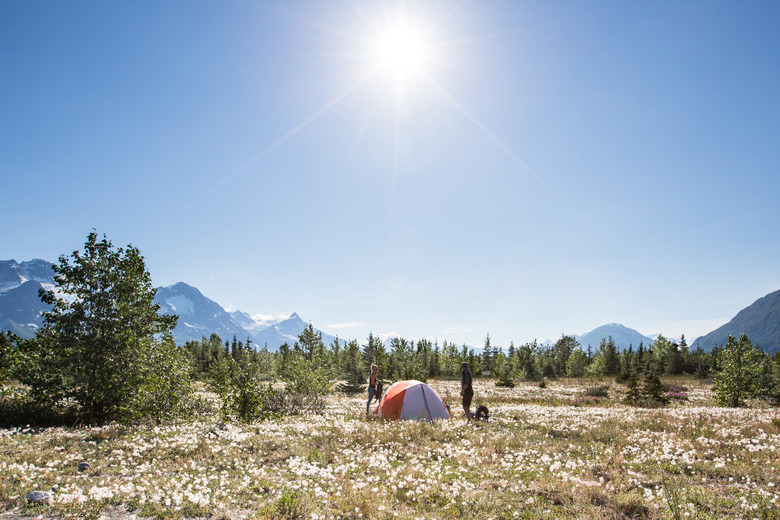Limiting Factors In A Tundra
The term "limiting factors" refers to environmental stresses inherent in the ecology of a particular area that limit the procreation and expansion of some organisms. Some animals and plants may fare better than others under certain conditions, and some organisms have evolved to tolerate and even thrive in harsh environments. But others will be prevented from achieving their full biological potential — population density, physiological development, and health — by the area's limiting factors. In a tundra, a relatively harsh ecosystem for supporting some species, some organisms thrive while others barely hang on due to limiting factors like temperature, nutrient availability and moisture levels. Only animals who can tolerate the cold temperatures and maneuver through snow and darkness can thrive in a tundra.
Temperature
Temperature
The tundra has the coldest and driest climates on the planet. In the winter months, temperatures can drop as low as -94 F (-70 C). The springtime and summer seasons are warm enough to melt snow, but the highest temperatures the tundra sees are around 54 F (12 C). The average temperatures for a full year, and for each season, even summer, are very low, and this limiting factor is a primary one in determining what types of life can thrive, or even survive, in a tundra.
Sunlight
Sunlight
Located closer to Earth's poles, the tundra sees months of almost complete darkness during the winter months. The summer brings almost constant sun. Sunlight, its duration per day and the qualities of the light itself, present limiting factors for plant and animal life in the tundra. With such volatile changes in the sunlight cycle, photosynthesis is not triggered on the optimum schedule. Plants are not able to flower or reproduce effectively, and this inhibits the food supply for herbivorous and omnivorous animals.
Moisture
Moisture
With an annual precipitation rate of 6 to 10 inches, the tundra is comparable to a desert environment in terms of moisture. That moisture is primarily snow, which melts in the spring and summer. However, the permafrost layer underneath the soil in a tundra prevents moisture from absorbing into the ground. Lakes and streams form in the summer above the permafrost.
References
Cite This Article
MLA
Purna, Ana. "Limiting Factors In A Tundra" sciencing.com, https://www.sciencing.com/limiting-factors-tundra-7433311/. 22 November 2019.
APA
Purna, Ana. (2019, November 22). Limiting Factors In A Tundra. sciencing.com. Retrieved from https://www.sciencing.com/limiting-factors-tundra-7433311/
Chicago
Purna, Ana. Limiting Factors In A Tundra last modified August 30, 2022. https://www.sciencing.com/limiting-factors-tundra-7433311/
